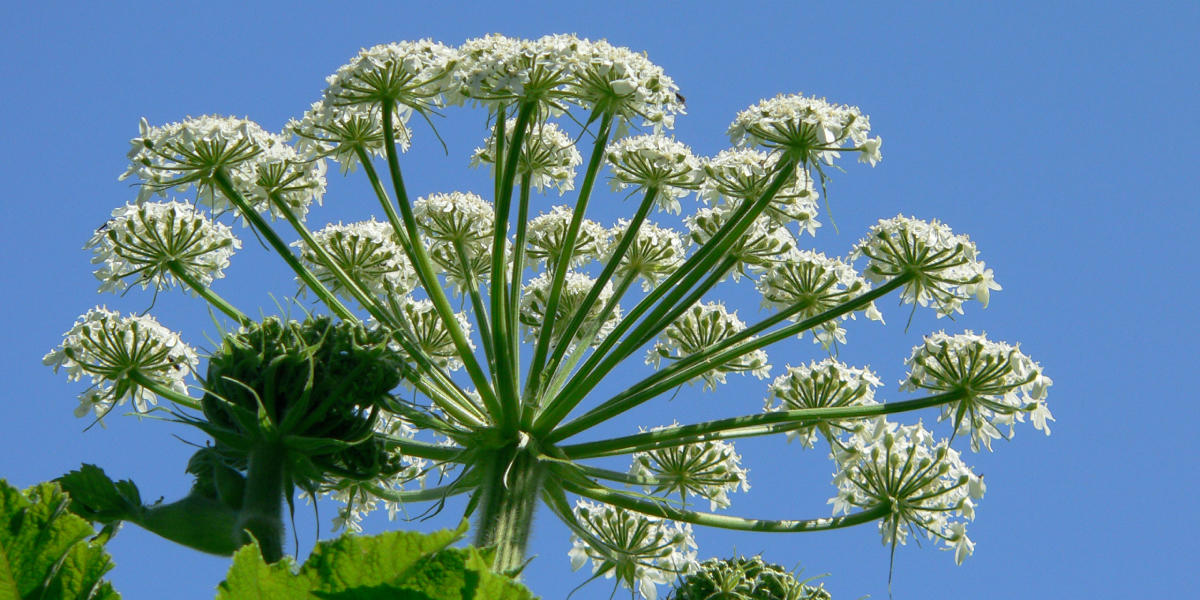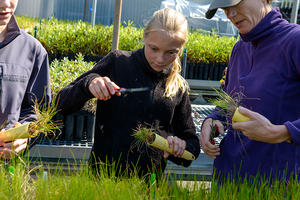
Endangered
No
Latin Derivation
Genus: Heracleum - named for Hercules, who was supposed to have used it first for medicine. Also thought to be named after Hercules because he was considered a mortal of great size and strength much like the plant.
Species: lanatum - covered with long, wooly hair.
Family Characteristics
Apiaceae (Carrot of Parsley family). Stems are often hollow between nodes, leaves are generally compound with strongly sheathing leaf bases. Flowers are in umbels, and sometimes compound.
Description
Growth: Cow parsnip is tall (stands 1-3 m).
Roots: Stout taproot, fleshy fibrous roots.
Stems: Stem is erect, branched, hairy and hollow. Usually 1-2.5m tall and 2cm in diameter. Leaf is ternate (having 3 leaflets); each leaflet is lobed, deeply toothed, and finely serrate.
Inflorescence: White flowers are large compound umbels 15-30cm across. Some flowers only produce stamens, while other produce bisexual flowers that produce seed. Primary umbels produce 80% of the seed. Blooms March to May.
Fruits: The fruit is oblong, 8-12mm long with very fine hair. The fruit is marked on the faces by narrow ribs and dark lines. Some think the fruit has a disagreeable smell.
Restoration
Cow parsnip is moderately good for soil stabilization and erosion control.
Habitat
Cow parsnip grows in a wide variety of forested habitat types, grasslands, shrublands, meadows, alpine, and riparian zones. Around the Marin Headlands it occupies well-shaded, moist places. Grows in seral to climax communities. Not common in disturbed areas, cow parsnip is sensitive to soil compaction and severe soil disturbances.
Ethnobotanical Information
The Cree gathered young cow parsnip stalks and roasted them on hot coals, later eating the pith. Young roots were also cooked as a vegetable, like parsnip. Medicinally, pastes of dried grated roots were applied to swollen legs to relieve swelling and were used on aching limbs and heads to relieve pain. Young leaf stalks and stems, before flowering, were eaten like stewed celery.

